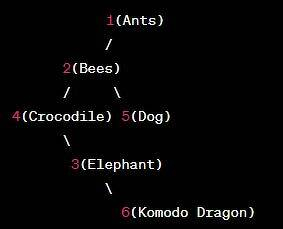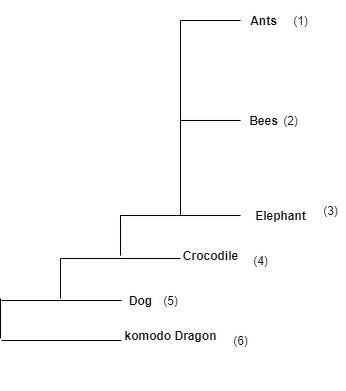Answer:
Please check the answer below:Step-by-step explanation:
We're diving into the world of cladistics, aren't we? Unfortunately, I can't draw, but I can certainly guide you through it!
Rough Copy Tree:

Characteristics:
Ants (1) and Bees (2):
* Insects
* Social structure (colony-based)
* Exoskeleton
* Six legs
Elephant (3):
* Mammal
* Large size
* Trunk
* Terrestrial
Crocodile (4):
* Reptile
* Aquatic
* Scales
* Carnivorous
Dog (5):
* Mammal
* Domesticated
* Fur
* Four legs
Komodo Dragon (6):
* Reptile
* Carnivorous
* Large size
* Terrestrial
Good Copy Cladogram:

Explanation:
* Starting from the base, the cladogram shows the common characteristics shared by groups of organisms.
* Ants and bees share characteristics of being insects with a social structure.
* The next branch includes the elephant, indicating the common mammalian features with ants and bees.
* Crocodile branches off earlier because it shares reptilian characteristics with Komodo dragon.
* Dog branches off from the crocodile branch, indicating its mammalian features.
* Komodo dragon branches off last, indicating its shared reptilian features with the crocodile.